Our usual lunch is Bi Bim Bap – which is Korean for “leftovers.” (Literally, it means “mixed with rice.”)
Bi Bim Bap is a versatile dish which can be assembled out of almost any combination of ingredients. Like Cambridge Fried Rice, it is a classic Asian method for combining leftovers to create a meal in a bowl.
The Bi Bim Bap Recipe
The best place to look for a formula for Bi Bim Bap may be the Perfect Health Diet Food Plate:
The body of the apple contains our formula for a meal. Great meals combine four kinds of ingredients:
- A safe starch.
- Meat, fish, and eggs.
- Vegetables, herbs, and spices.
- A sauce made from fats and acids.
Our Version of Korean Bi Bim Bap
The classic Korean Bibimbap recipe uses barbecued beef and eggs as the meat, rice as the starch, mixed vegetables, and a Korean spicy sauce with sweet and sour flavors.
We assembled the following ingredients as an example. For meat we used meatballs and slices of leftover ribeye:
We also included eggs as a second kind of meat. As a base for the sauce we used Korean spicy sauce; here is a possible brand: Sunchang Gochujang 500g. Which is not perfect, as it contains
soybean powderwheat, but as it’s quite spicy a little goes a long way. Chili flakes can substitute for the Korean sauce.
Koreans usually favor a mix of spicy, sweet, and sour flavors in the sauce. The sweet and sour can be provided by equal parts rice syrup and rice vinegar, plus a splash of sesame oil and salt and pepper:
The spicy sauce paste is mixed with this sweet and sour mixture to make the sauce. One tablespoon spicy sauce, 1 tablespoon rice syrup, and 1 tablespoon rice vinegar or lemon juice will make a good sauce. For children, increase the sweet and sour flavors and decrease the spicy/chili flavors.
For acids, lemon juice or lime juice, or some other flavor of vinegar, can be substituted for the rice vinegar.
For more spiciness, bits of jalapeno can be added. Egg yolk can provide an additional source of fat.
Include vegetables of your choice. These are onions, peppers, green bean, and watercress:
Kimchi (fermented vegetables) can be substituted for the vegetables.
Everyone can make his own bowl. Since we’ve just been debating how much of the “safe starches” one should eat, here’s what we consider a full meal’s worth of rice:
This is 150 g of cooked white rice which works out to about 200 calories of carbs. We eat two meals a day so this works out to about 400 carb calories per day.
On top of the rice Paul has added meat, vegetables, egg, egg yolk, spicy sauce, and lemon juice:
A bit of rice syrup and a little more meat got the proportions to Paul’s liking.
Here was Shou-Ching’s bowl:
Just mix all the ingredients together and eat!
Bi Bim Bap at Lunch
We didn’t take pictures, but Paul’s typical lunch is assembled like this:
- Whatever leftover safe starch is available is put at the bottom of the bowl. If this is potato or taro, Paul dices it up into small pieces; if it is rice it looks rather like the picture above.
- Paul adds 3 egg yolks and the juice of half or quarter lemon.
- Paul adds leftover meat and vegetables.
- Paul adds spices to taste. These may include spices with medicinal value, such as turmeric, and then curry or other spicy flavors. Or they may include salt and pepper, or rice syrup for a sweet flavor.
- The Bi Bim Bap is microwaved for a minute, then mixed and microwaved again until it is uniformly warm.
At dinner we usually cook at least twice as much as we intend to eat that night, so there are plenty of leftovers. The leftovers provide lunch and usually a Bi Bim Bap, Cambridge Fried Rice, or Japanese sushi buffet dinner of leftovers once during the week.







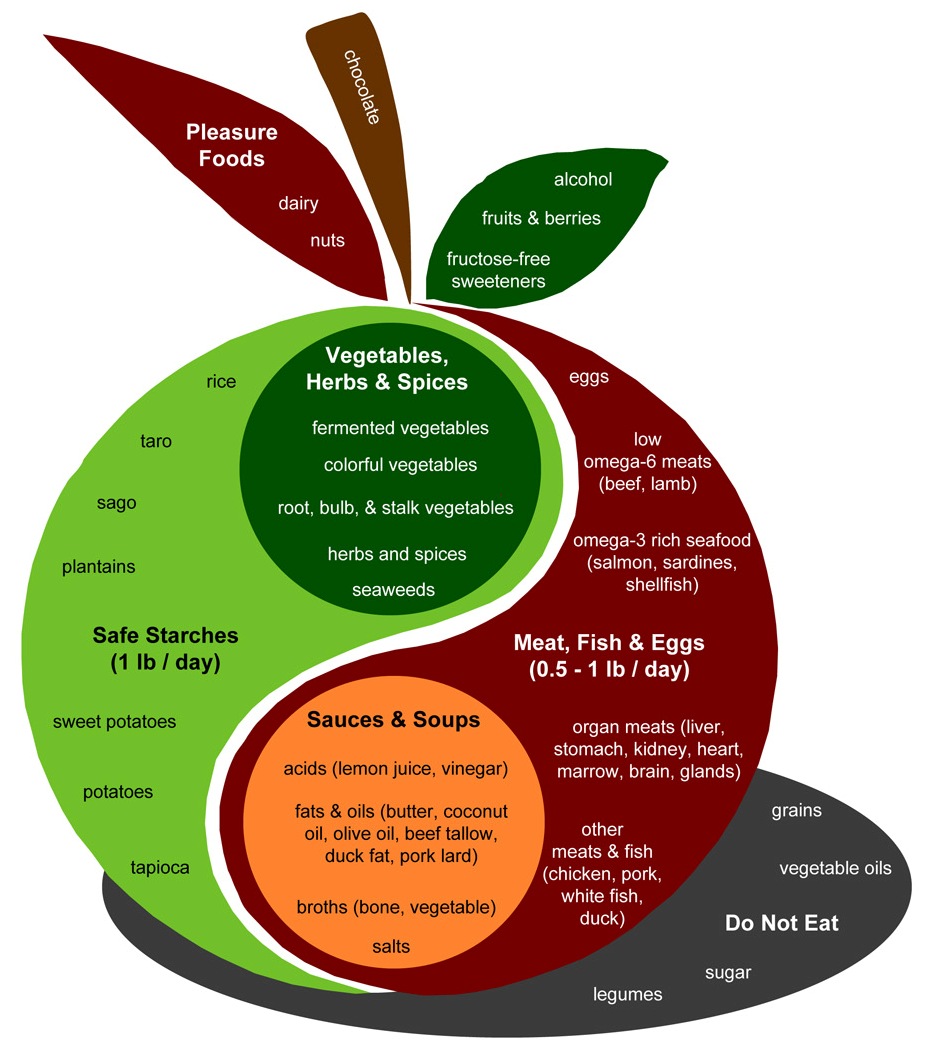
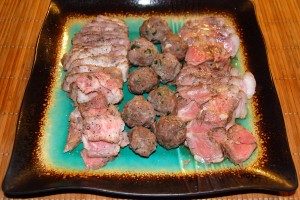
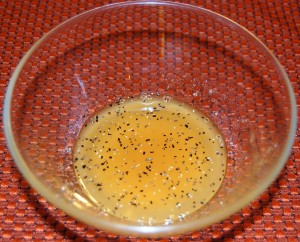
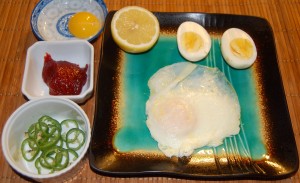
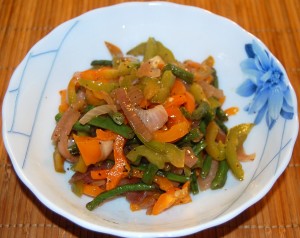
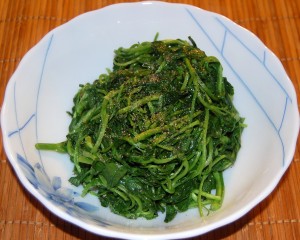
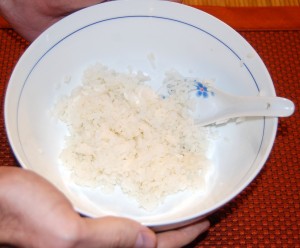
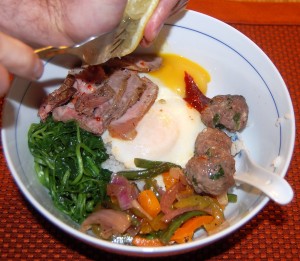
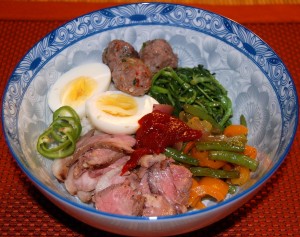
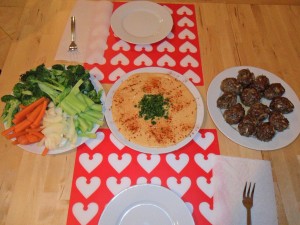
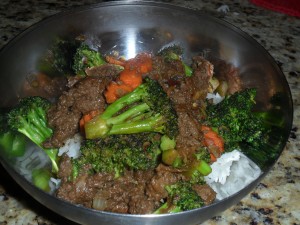
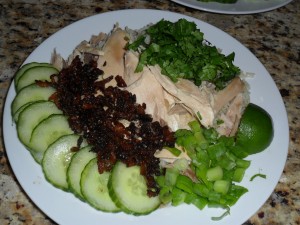
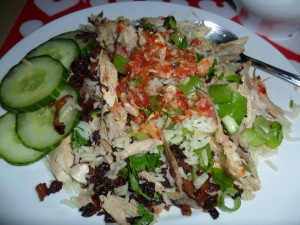
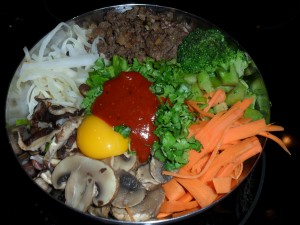
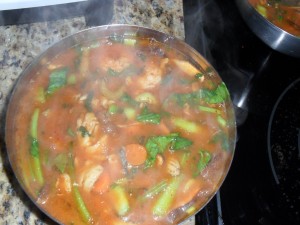
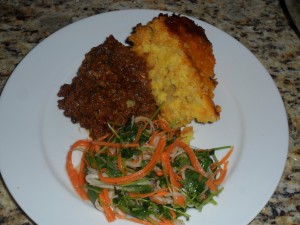
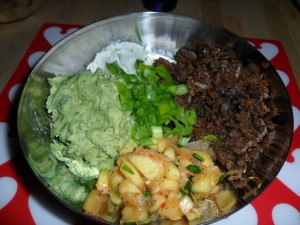
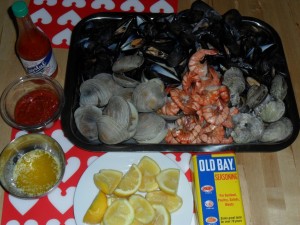
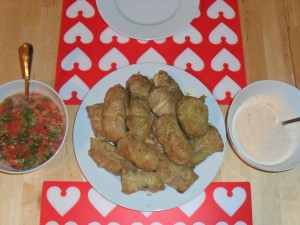
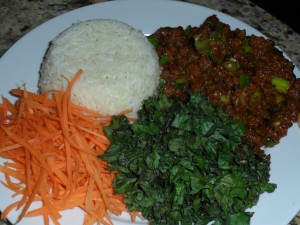
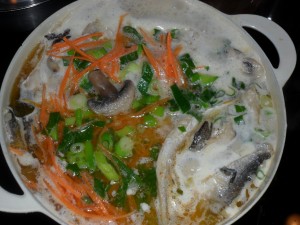
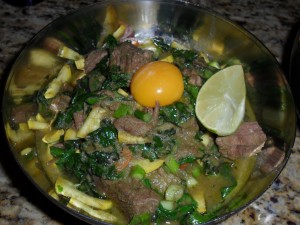
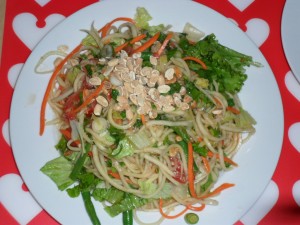
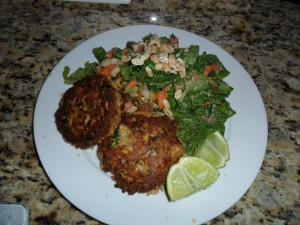
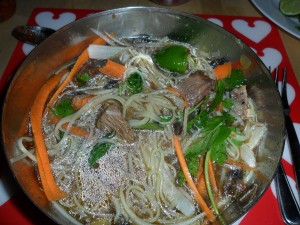
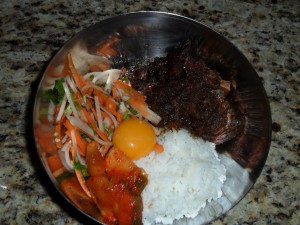
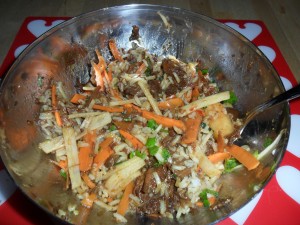
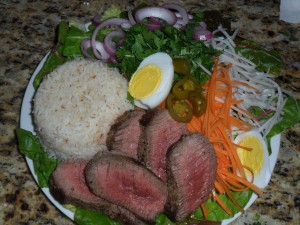
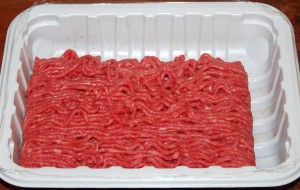
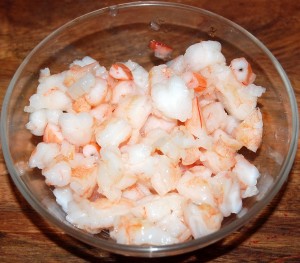
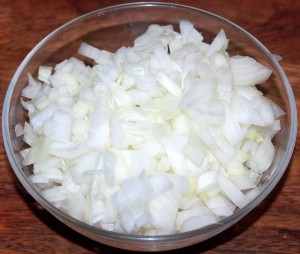
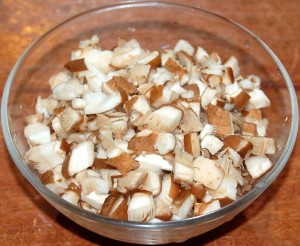
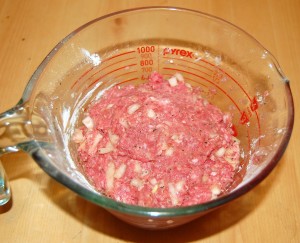
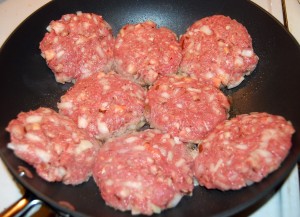
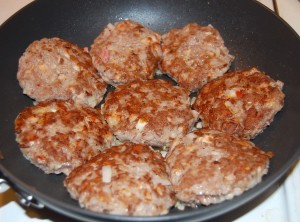
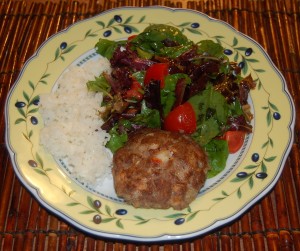
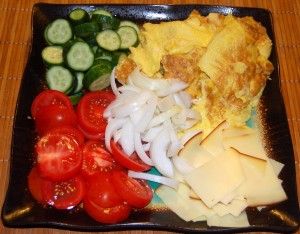
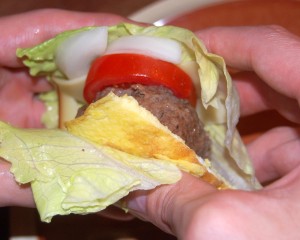
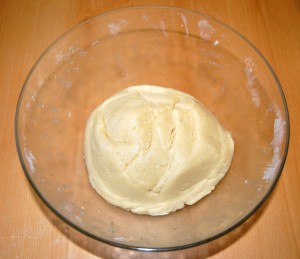
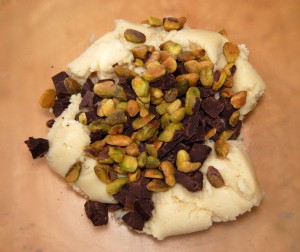
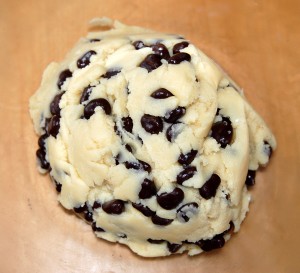
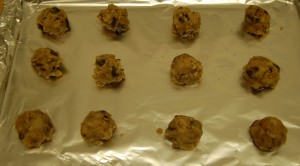
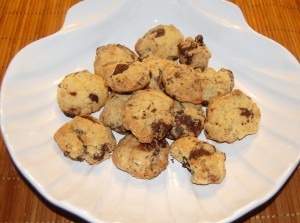
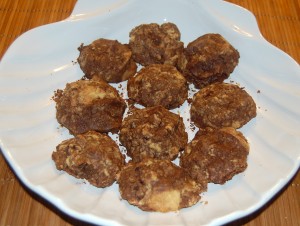




Recent Comments